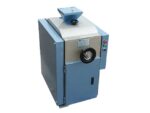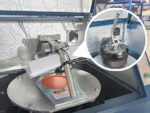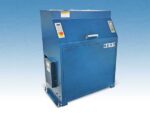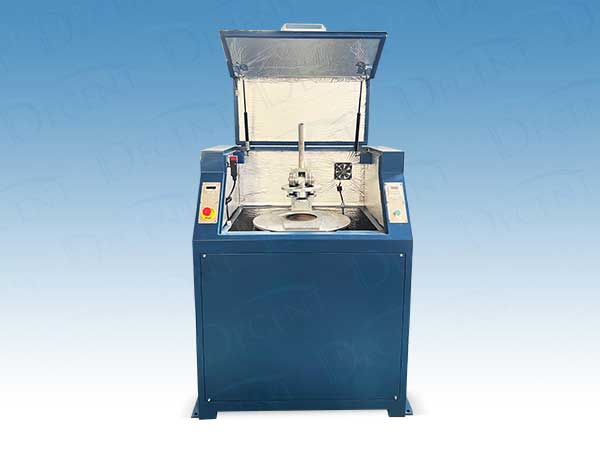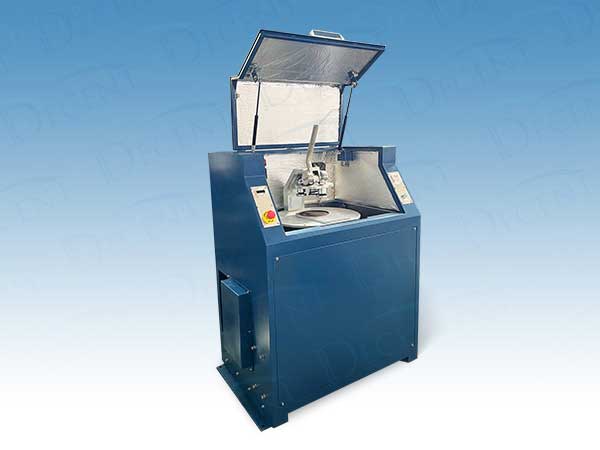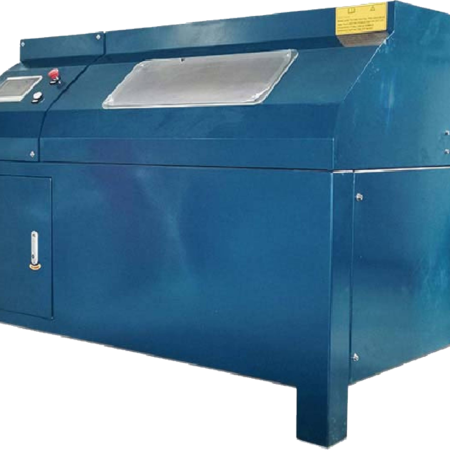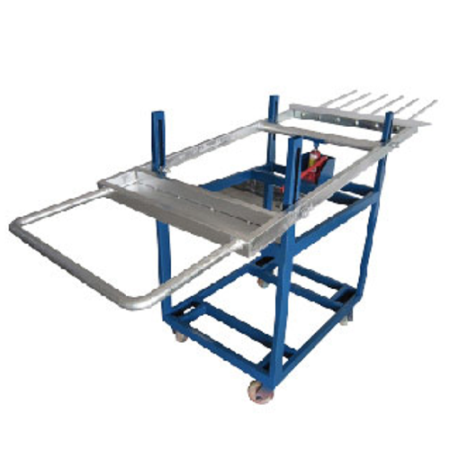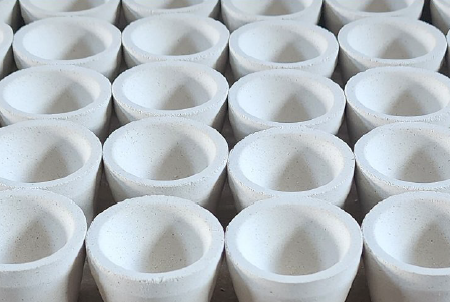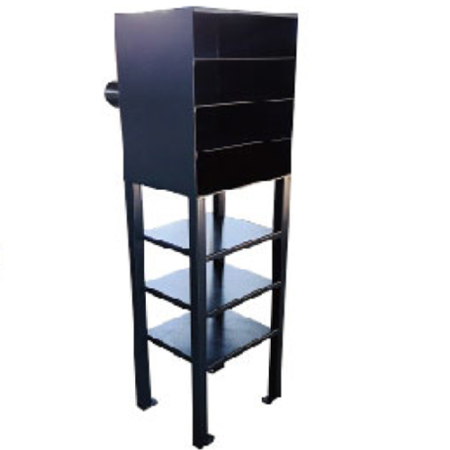Precision at its Finest: Elevate Your Lab Experiments with Global Lab Supplies
Lab Pulverizer Mill DP1000
GLS high-performance Pulverizer Mill, designed for efficient sample preparation. This industrial-grade equipment utilizes electric power to drive the mill platform, producing the desired mesh sample. With its robust construction and advanced features, our Pulverizer Mill is an ideal solution for various laboratory and industrial applications.
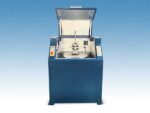
Lab Pulverizer Mill DP1000
Request a Call Back
High-Performance Pulverizer Mill for Efficient Sample Preparation
GLS Lab Pulverizer Mill DP1000 operates with the utilization of eccentric weights that rotate within the mill platform, generating horizontal circular motions. This unique motion allows the pulverizer bowl to effectively crush sample materials, resulting in the desired representative sample. With adjustable running time and particle size control, along with consideration of inherent material properties, this high-performance mill is ideal for efficient sample preparation in various laboratory and industrial applications.
Advantages of Lab Pulverizer Mill DP1000
- Exceptional Performance: The Pulverizer Mill ensures efficient sample preparation, delivering high-performance results.
- Versatile Application: Accommodates different sample materials and particle sizes, making it suitable for various laboratory and industrial settings.
- User-Friendly Operation: The integrated control box features switch buttons, a motor overload safety device, and a pneumatic fail-safe device, ensuring easy and safe operation.
- Enhanced Safety Features: The lid protection device automatically stops the pulverizer when the lid is opened, prioritizing user safety. An optional variable frequency drive offers added convenience.
Main Features
- Suitable for ores, minerals, ferroalloys, ceramics, soils, aggregates, and chemicals.
- Designed for large sample preparation tasks in mineral laboratories.
- The universal drive shaft provides more power to the vibratory head and optimizes motor life.
- The trouble-free manual pressing clamp features a unique quick, easy, and non-loosening bowl clamping design.
- Grinding bowl sizes consist of 300cc, 400cc, 800cc, 1000cc, and 2000cc, allowing for versatility in sample sizes.
- 40g up to 1600g can be ground at once, accommodating a wide range of sample sizes.
- Samples can be milled to 95% passing 75 microns within 3 minutes, delivering fast and efficient results.
- A lid-locking safety switch makes the chamber inaccessible during operation, ensuring operator safety. It incorporates a time delay to prevent the operator from accessing the mill platform until the machine has completely stopped.
- The mill will not start until the lid is completely closed, preventing any accidents or mishaps during operation.
- The machine can be stopped quickly with the easily accessible emergency stop button, providing an added layer of safety and control.
- The dismountable design of the front panel offers easy and convenient maintenance, reducing downtime and ensuring smooth operation.
- Optional Bowl Jack pneumatic lifting device allows for less manpower and ensures better efficiency, enhancing productivity and ease of use.
- A sturdy cabinet with a rubber gasket provides a dust-free and environmentally friendly operation and performance, maintaining cleanliness and sustainability in the laboratory environment.
Lab Pulverizer Mill DP1000 Technical Parameter
| Voltage | 380-415V 50Hz 3phase | Compressed Air Requirements | 500 kPa to 600 kPa at 1L per minute maximum flow |
| Motor Power | 2.2kW | Compatible Grinding Bowls | 125cc 300cc 400cc 800cc 1000cc 2000cc |
| Feed Size | ≤20mm | Bowl Materials | Standard steel, Chrome steel, Tungsten carbide |
| Output Size | 95% 75μm | Mill Net Weight | 360kg |
| Timer Setting | 1 second-99 hours | Mill Dimensions | 1050mmx1250x725mm(LxHxW) |
| Grinding Capacity | 40g-1600g |
Related Products
GLS’s crucible tumbler is a new type of forward and reverse rotating mixing equipment. The crucible tumbler is mainly used for batch mixing of fire assay mineral samples and fluxes. The device can mix up to 50 fire assay crucibles at a time. This significantly improves the efficiency of laboratory sample preparation and reduces manual operations. It is one of the necessary equipment for fire assay laboratory.
The lengthy time required for fire assaying of gold, silver and precious metals can often be compensated for by the simultaneous analysis of a large number of samples. A typical fire assay laboratory is usually equipped with several furnaces and cupellation furnaces, each capable of collecting multiple samples. Therefore, GLS’s Multiple Sample Load Forklift, Crucible Tumbler and other equipment have greatly improved the efficiency of laboratory sample preparation and load-and-unload.
• Easy to maintain and operate.
• Door panel for easy access to transformer.
• Fast and accurate temperature control ensures consistent and stable temperature.
• Built to industrial standards and compatible with multipour and multiload system.
• Pneumatic rising door operated by food pedal reduces thermal radiation hurt and risk to operator.
• 25 place/50 place one-time pots loading capacity, saving time and increase efficiency.
• Easy to operate with pedal and handle to realize lifting and pots placing action.
• High-intensity steering wheel with brakes, safe and stable, easy to move.
• Customized loading capacity to meets client’s needs.
Cupel is a shallow, porous crucible with approximately 96% magnesia. It is especially used to separate gold, silver, and precious metals from lead buckles in the process of Pb-Fire assay. By using high-quality raw materials and scientific formulas, GLS’s fire assay magnesia cupel has a smooth surface, high mechanical strength, and will not crack and pit during high-temperature cupellation.
Zirconium exhibits superb corrosion resistance in most organic and inorganic acids, salt solutions, strong alkalis and a few molten salts.
The passive oxide film (corrosion barrier) is stable in both reducing and oxidizing conditions. Zirconium is excellent in both acid and base solutions.
The temperature limit for use in air is
about 450˚C to 500˚C.


